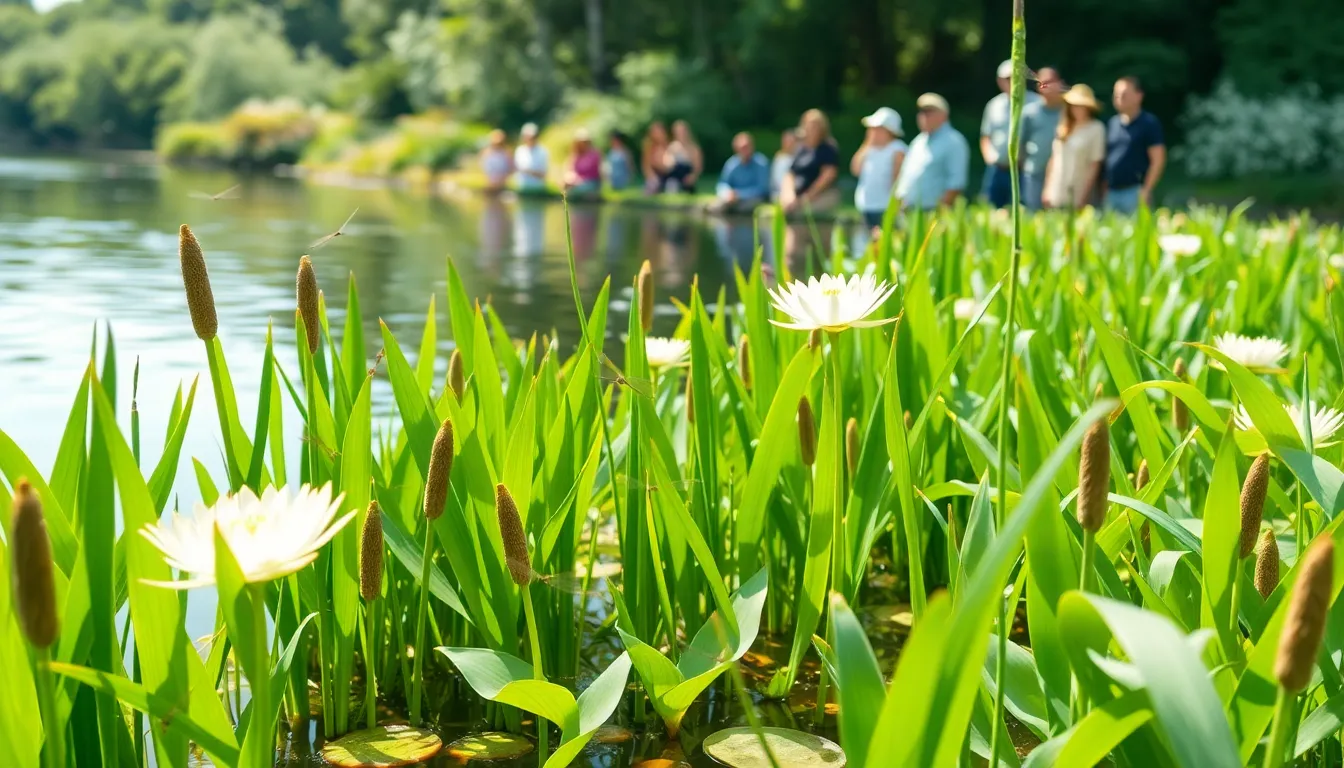Have you ever found yourself daydreaming about a serene pond, complete with swaying reeds and vibrant lilies? Well, aquatic plants not only beautify aquatic habitats but also play a crucial role in maintaining ecological balance. From oxygen production to providing shelter for fish, these green wonders are more essential than you might think. Let’s jump into the watery world of common aquatic plants, where beauty meets functionality, and perhaps find a few new favorites you didn’t even know existed.
Common Aquatic Plants

Aquatic plants are the true heroes of many ecosystems, offering a host of benefits that make them indispensable. These plants not only enhance biodiversity but also protect against erosion and improve water quality.
By filtering pollutants and providing oxygen, they create a favorable environment for aquatic life. Fish and insects rely on plants for food and shelter, making them integral to the food chain in water bodies. Also, they contribute to the aesthetic value of ponds and lakes, attracting visitors who appreciate nature’s beauty. In short, aquatic plants are not just decorations: they are vital components of their ecosystems.
Types of Aquatic Plants
Aquatic plants can generally be categorized into three main types, each with unique adaptations to life in water.
1. Submerged Plants
These fascinating plants thrive completely underwater. Common examples include eelgrass and hornwort. They help maintain oxygen levels and provide critical habitats for fish and invertebrates. Their leaves often filter sediment and reduce turbidity, contributing to clearer water.
2. Floating Plants
Floating plants, like the lovely water lily and duckweed, drift gracefully on the water’s surface. They bask in sunlight, allowing photosynthesis to occur with ease. Some even offer shelter and nesting areas for various species, not to mention their noteworthy ability to absorb excess nutrients from the water.
3. Emergent Plants
These aquatic plants rise above the water and anchor their roots in the substrate. Examples include cattails and bulrushes. Emergent plants are fantastic for stabilizing shorelines and providing habitats for birds and small mammals, making them crucial for biodiversity.
Habitats for Aquatic Plants
Aquatic plants can adapt to various environments, thriving in both freshwater and saltwater habitats.
1. Freshwater Habitats
Rivers, lakes, and ponds provide the perfect settings for a plethora of aquatic plant species. These habitats often boast rich nutrient content, allowing for lush growth. From slow-moving shallows to the depths of crystal-clear lakes, freshwater environments support a vibrant community of plant life that sustains entire ecosystems.
2. Saltwater Habitats
While fewer species are found in saltwater, salt marshes and mangroves are vital for marine ecosystems. Plants like seagrass and saltwort thrive here, creating productive environments that support fish, crustaceans, and numerous bird species. Hence, saltwater habitats, although seemingly less diverse, are crucial grounds for many aquatic plants.
Growing and Caring for Aquatic Plants
Caring for aquatic plants can be an enjoyable challenge, but it’s crucial to choose the right plants for your specific situation.
1. Choosing the Right Plants
When selecting plants, consider the climate, water type, and light conditions of your habitat. Some species, like water hyacinth, thrive in warm climates, while others, such as the hardy blue flag iris, can withstand colder temperatures. Assessing your environment will lead to successful growth.
2. Planting Techniques
Planting techniques vary depending on the type of aquatic plants chosen. Most submerged and emergent plants require anchoring in the substrate, while floating plants can simply be placed on the water’s surface. It’s essential to ensure that the roots have adequate access to nutrients and oxygen.
3. Maintenance and Care
Routine care involves monitoring water quality and removing debris. Regular pruning helps maintain growth, and fertilization is often necessary during peak growing seasons. Ensuring that plants have enough sunlight is crucial, as well, too little light can stunt growth.
Common Issues and Solutions
Like any plants, aquatic varieties face their share of challenges. Fortunately, most issues have straightforward solutions.
Algae Overgrowth: This is a common problem, often caused by excess nutrients in the water. Adding more aquatic plants can help outcompete algae for resources.
Pests: Aquatic pests can munch on healthy foliage. Implementing biological controls, like introducing predatory insects, can keep these nuisances at bay.
Water Quality: Regular testing can prevent harmful conditions. Keeping an eye on pH, nutrient levels, and temperature ensures a thriving aquatic plant community.

